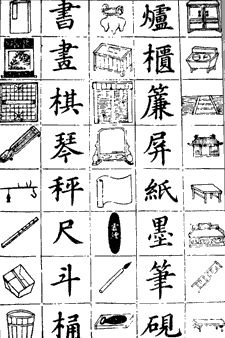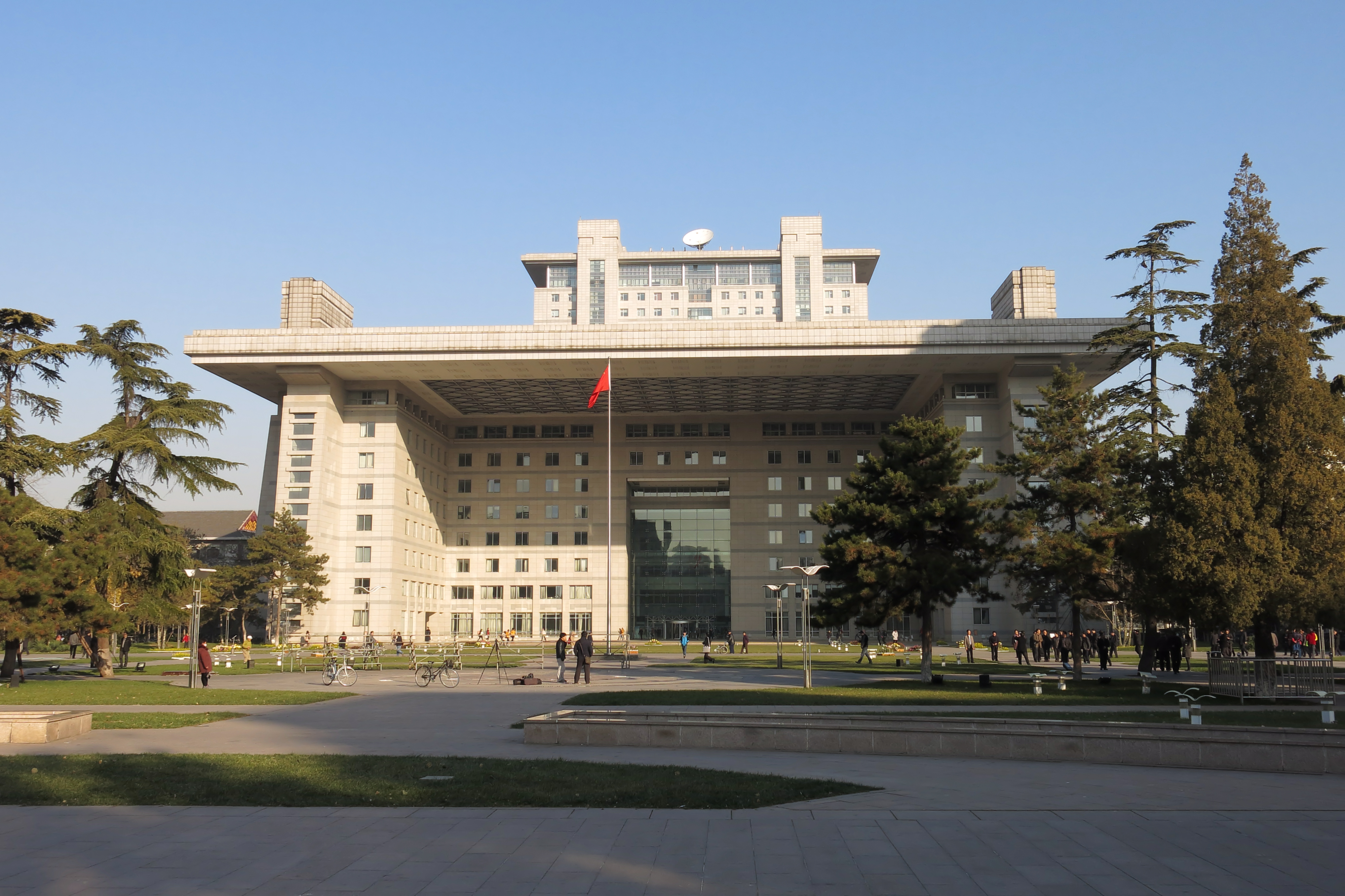|
List Of Commonly Used Standard Chinese Characters
The ''List of Commonly Used Standard Chinese Characters'' is the current standard list of 8,105 Chinese characters published by the government of the People's Republic of China and promulgated in June 2013. The project began in 2001, originally named the "Table of Standard Chinese Characters." This table integrates the ''First Batch of Simplified Characters'' (1955), the ''Complete List of Simplified Characters'' (initially published in 1964, last revised in 1986), and the ''List of Commonly Used Characters in Modern Chinese'' (1988), while also refining and improving it based on the current usage of characters in mainland China. After 8 years of development, a draft for public comment was released on August 12, 2009. It was officially promulgated on June 5, 2013, becoming the standard for the use of Chinese characters in general societal applications, and all previously related character lists were discontinued from that date. Of the characters included, 3,500 are in Tier 1 ... [...More Info...] [...Related Items...] OR: [Wikipedia] [Google] [Baidu] |
Chinese Characters
Chinese characters () are logograms developed for the writing of Chinese. In addition, they have been adapted to write other East Asian languages, and remain a key component of the Japanese writing system where they are known as '' kanji''. Chinese characters in South Korea, which are known as '' hanja'', retain significant use in Korean academia to study its documents, history, literature and records. Vietnam once used the ''chữ Hán'' and developed chữ Nôm to write Vietnamese before turning to a romanized alphabet. Chinese characters are the oldest continuously used system of writing in the world. By virtue of their widespread current use throughout East Asia and Southeast Asia, as well as their profound historic use throughout the Sinosphere, Chinese characters are among the most widely adopted writing systems in the world by number of users. The total number of Chinese characters ever to appear in a dictionary is in the tens of thousands, though most are g ... [...More Info...] [...Related Items...] OR: [Wikipedia] [Google] [Baidu] |
People's Republic Of China
China, officially the People's Republic of China (PRC), is a country in East Asia. It is the world's List of countries and dependencies by population, most populous country, with a Population of China, population exceeding 1.4 billion, slightly ahead of India. China spans the equivalent of five time zones and Borders of China, borders fourteen countries by land, the List of countries and territories by land borders, most of any country in the world, tied with Russia. Covering an area of approximately , it is the world's third List of countries and dependencies by area, largest country by total land area. The country consists of 22 provinces of China, provinces, five autonomous regions of China, autonomous regions, four direct-administered municipalities of China, municipalities, and two special administrative regions of China, Special Administrative Regions (Hong Kong and Macau). The national capital is Beijing, and the List of cities in China by population, most populous ci ... [...More Info...] [...Related Items...] OR: [Wikipedia] [Google] [Baidu] |
Simplified Chinese Characters
Simplified Chinese characters are standardized Chinese characters used in mainland China, Malaysia and Singapore, as prescribed by the '' Table of General Standard Chinese Characters''. Along with traditional Chinese characters, they are one of the two standard character sets of the contemporary Chinese written language. The government of the People's Republic of China in mainland China has promoted them for use in printing since the 1950s and 1960s to encourage literacy. They are officially used in the People's Republic of China, Malaysia and Singapore, while traditional Chinese characters still remain in common use in Hong Kong, Macau, ROC/Taiwan and Japan to a certain extent. Simplified Chinese characters may be referred to by their official name above or colloquially . In its broadest sense, the latter term refers to all characters that have undergone simplifications of character "structure" or "body", some of which have existed for millennia mainly in handwriting alon ... [...More Info...] [...Related Items...] OR: [Wikipedia] [Google] [Baidu] |
Beijing Normal University
Beijing Normal University (BNU, ), colloquially known as Beishida (), is a public research university located in Beijing, China, with a strong emphasis on humanities and sciences. It is one of the oldest and most prestigious universities in China as part of Class A Double First Class University in the Double First Class University Plan and was designated by the Chinese Ministry of Education as a member of Project 985 and Project 211. "Normal school" refers to an institution that trained schoolteachers in the early 20th century. The title is preserved in the names of Chinese institutions after they developed into comprehensive universities. It also reflects BNU's heritage as a Faculty of Education member of the Imperial University of Peking which was established as China's first modern university. BNU ranked first among universities that originated as “normal schools”. The Faculty of Education is considered the best in China according to several widely cited internation ... [...More Info...] [...Related Items...] OR: [Wikipedia] [Google] [Baidu] |
Unicode
Unicode, formally The Unicode Standard,The formal version reference is is an information technology standard for the consistent encoding, representation, and handling of text expressed in most of the world's writing systems. The standard, which is maintained by the Unicode Consortium, defines as of the current version (15.0) 149,186 characters covering 161 modern and historic scripts, as well as symbols, emoji (including in colors), and non-visual control and formatting codes. Unicode's success at unifying character sets has led to its widespread and predominant use in the internationalization and localization of computer software. The standard has been implemented in many recent technologies, including modern operating systems, XML, and most modern programming languages. The Unicode character repertoire is synchronized with Universal Coded Character Set, ISO/IEC 10646, each being code-for-code identical with the other. ''The Unicode Standard'', however, includes more th ... [...More Info...] [...Related Items...] OR: [Wikipedia] [Google] [Baidu] |
Basic Multilingual Plane
In the Unicode standard, a plane is a continuous group of 65,536 (216) code points. There are 17 planes, identified by the numbers 0 to 16, which corresponds with the possible values 00–1016 of the first two positions in six position hexadecimal format (U+''hhhhhh''). Plane 0 is the Basic Multilingual Plane (BMP), which contains most commonly used characters. The higher planes 1 through 16 are called "supplementary planes". The last code point in Unicode is the last code point in plane 16, U+10FFFF. As of Unicode version , five of the planes have assigned code points (characters), and seven are named. The limit of 17 planes is due to UTF-16, which can encode 220 code points (16 planes) as pairs of words, plus the BMP as a single word. UTF-8 was designed with a much larger limit of 231 (2,147,483,648) code points (32,768 planes), and would still be able to encode 221 (2,097,152) code points (32 planes) even under the current limit of 4 bytes. The 17 planes can accommodate 1 ... [...More Info...] [...Related Items...] OR: [Wikipedia] [Google] [Baidu] |
Table Of Comparison Between Standard, Traditional And Variant Chinese Characters
The Table of Comparison between Standard, Traditional and Variant Chinese Characters () is the new standard of the PRC on the relationship between simplified, traditional and variant Chinese characters. It includes all the characters in the List of Commonly Used Standard Chinese Characters which have different forms in traditional or variant writing. The comparison table was built by integrating the General List of Simplified Chinese Characters and the First List of Processed Variant Chinese Characters. History In December 1955, the Ministry of Culture and the Chinese Character Reform Committee of the PRC jointly announced the "First List of Processed Variant Characters" (第一批异体字整理表). It contained 810 groups of variant characters, totaling 1865 characters. According to the principle of following the common and simple, one character from each group was selected as the correct (or standard) form, and the rest are eliminated. After some later adjustments, the list n ... [...More Info...] [...Related Items...] OR: [Wikipedia] [Google] [Baidu] |
The First Series Of Standardized Forms Of Words With Non-standardized Variant Forms
''The First Series of Standardized Forms of Words with Non-standardized Variant Forms'' () published on December 19, 2001 and officially implemented on March 31, 2002, is a Standard Chinese style guide published in China. It contains 338 Standard Chinese words that have variant written forms (i.e. where the same word may be written with one or more different Chinese characters with the same pronunciation, referred to as "", translated into English in the official publication as "variant forms of the same word"). In the ''First Series'', one of the variant written forms for each word was selected as the recommended standard form. Content Most of the decisions reached about the recommended standard forms for each word were reached based in part on statistical analysis of the usage of the variant written forms in the ''People's Daily'' during the period 19952000. Dictionaries consulted in the decision-making process included '' Xiandai Hanyu Cidian'', '' Hanyu Da Cidian'', '' C ... [...More Info...] [...Related Items...] OR: [Wikipedia] [Google] [Baidu] |
Jōyō Kanji
The is the guide to kanji characters and their readings, announced officially by the Japanese Ministry of Education. Current ''jōyō kanji'' are those on a list of 2,136 characters issued in 2010. It is a slightly modified version of the '' tōyō kanji'', which was the initial list of secondary school-level kanji standardized after World War II. The list is not a comprehensive list of all characters and readings in regular use; rather, it is intended as a literacy baseline for those who have completed compulsory education, as well as a list of permitted characters and readings for use in official government documents. Due to the requirement that official government documents make use of only ''jōyō kanji'' and their readings, several rare characters are also included due to their use in the Constitution of Japan, which was being written at the same time the original 1,850-character ''tōyō kanji'' list was compiled. The 2,136 kanji in the ''jōyō kanji'' consist of: * 1 ... [...More Info...] [...Related Items...] OR: [Wikipedia] [Google] [Baidu] |
Kanji
are the logographic Chinese characters taken from the Chinese script and used in the writing of Japanese. They were made a major part of the Japanese writing system during the time of Old Japanese and are still used, along with the subsequently-derived syllabic scripts of '' hiragana'' and '' katakana''. The characters have Japanese pronunciations; most have two, with one based on the Chinese sound. A few characters were invented in Japan by constructing character components derived from other Chinese characters. After World War II, Japan made its own efforts to simplify the characters, now known as shinjitai, by a process similar to China's simplification efforts, with the intention to increase literacy among the common folk. Since the 1920s, the Japanese government has published character lists periodically to help direct the education of its citizenry through the myriad Chinese characters that exist. There are nearly 3,000 kanji used in Japanese names and in comm ... [...More Info...] [...Related Items...] OR: [Wikipedia] [Google] [Baidu] |




